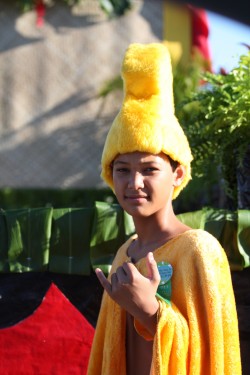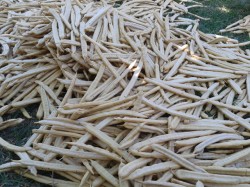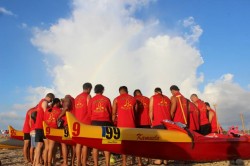Kamali`i Kane

Community Contributed
By Royden Abafo
Editor’s Note: Royden, a middle school student at Aka`ula School, originally wrote this in the school’s Oct. 25 newsletter. It is reprinted in its entirety here.
“Ladies and gentlemen, your new Kamalii Kane 2013, Royden Kohuali’imaikekahi Abafo.” During the Aloha Week Festival, I was the prince in the Royal Court. It wasn’t really that easy to walk and stand up in front of the public. I was presented with a yellow cape and a yellow helmet by the king. The whole court had to sit down for two and a half hours straight without talking, laughing, drinking or eating.…
















